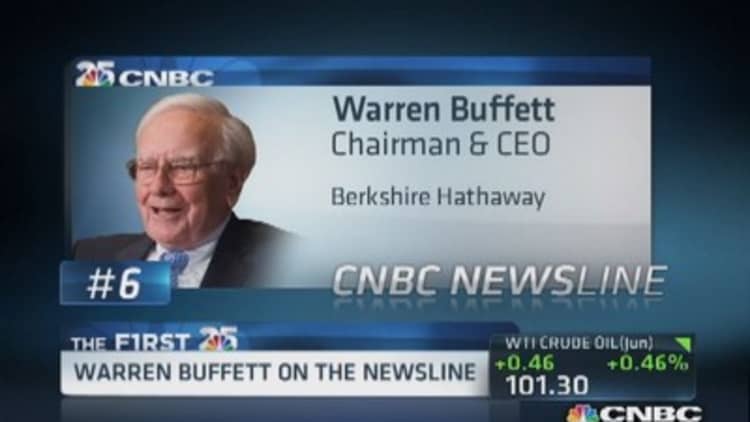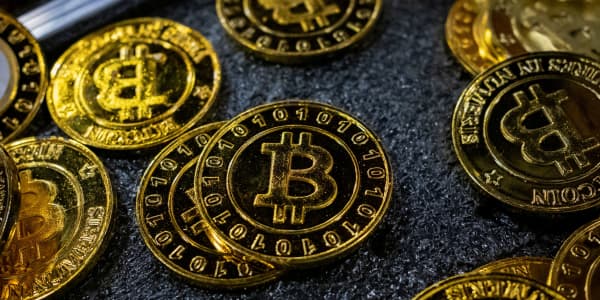The $1.9 billion endowment fund of Rockefeller University has quietly been using exchange-traded funds to execute some of its investing ideas. And it's not the only big investor to pursue low-cost index funds as part of its search for better returns.
That may seeming surprising. While global assets invested in ETFs topped $3 trillion earlier this year and money continues to pour in from retail investors seeking investment diversity with low fees, elite institutional investors are another story.
Pension funds, endowments and foundations — which maintain portfolios hundreds of times greater than the average individual investor — have been slow to embrace ETFs. A 2015 report from the research firm Market Strategies International found U.S. institutional investor portfolios were 54 percent actively managed and only 27 percent passively invested. But 27 percent is not insubstantial, and the report noted passive investments are gaining momentum with institutional investors.
Take the Toronto-based Nature Conservancy of Canada, which manages about $100 million. Its chief financial officer, Kamal Rajani, said it is using ETFs that cover Canadian, U.S. and international equities, as well as Canadian bonds.
What sorts of ETFs do other big fish favor and why? Here are six investing lessons from big investors on using ETFs to boost a portfolio at a low cost.
1. If you have a broad market trade you think will be a winner, use ETFs until you are able to refine your idea.
The $1.9 billion Rockefeller endowment shows that true investing giants are embracing ETFs, though not in the way an average investor might have come to expect.
Rockefeller chief investment officer Amy Falls explains: "We have used an ETF to initiate or expand exposure to an area, such as emerging markets, while we were completing a search for an active manager," she said. "In general, ETFs do not form a long-term or core part of our investment strategy, but they are a useful tool for moving more quickly toward an investment target."
Falls said that university endowments tend to use ETFs in broad equity markets. As an example, Rockefeller recently used Vanguard's Emerging Market Index ETF (VWO) as it expanded its exposure to emerging markets. "While we often have managers that we are researching prior to a target investment time, there are many times when a market opportunity may arise due to volatility, and we want the beta exposure but have not yet found the manager."
Falls added, "We are cautious on narrow-segment ETFs, as the costs get higher and the tracking error can be larger."
2. Accepting the limitations of your size and resources is a compelling argument in favor of ETFs.
Rockefeller CIO Falls said more consistent, long-term use of ETFs make sense for endowments that are either too large or too small to have adequate exposure to the highest-caliber active managers. On the large side, pension giants like CalPERs can fail to find the scale they need in active investments — that was one of the reasons CalPERS cited in abandoning hedge funds in 2014.
But for any investor, the more important thing to understand is how long it takes to identify the best managers — be prepared to spend a long time on that search.
How long?
"It takes us 18 months on average to do complete due diligence on managers in a prospective area," Falls said.
3. Using ETFs will give you more time to focus on the better areas for active management and alpha generation.
Ed Boyer, an investment committee member at the $95 million Goldseker Foundation in Baltimore and principal and senior consultant at Asset Strategy Consultants, said the nonprofit's investment committee discusses adding ETFs at nearly every meeting.
"Adding ETFs is a regular subject at board meetings," Boyer said.
He explained that large-cap equity, bond and international equity ETFs are the most appealing, as those are the areas where active managers struggle to outperform.
"Using ETFs where passive investing does well lets you focus on areas where active management makes sense, such as real estate, venture capital, private equity and other alternative areas. It's really a time-allocation issue," Boyer said.
Goldseker has a high allocation to actively managed alternatives, Boyer said, and has yet to add any ETFs.

4. ETFs are a good way to gain exposure to overseas developed markets.
As Falls noted, Rockefeller only used an emerging markets ETF until it identified the emerging markets trade it really wanted. And that matches another point, made by Jason Hilton, vice president of finance at the Northwest Health Foundation in Portland, Oregon, about where to use ETFs to create long-term exposure to broad markets.
"We use ETFs to capture broad passive equity exposures in developed markets," said Hilton.
Specifically, the nonprofit uses Vanguard's Developed Market Index ETF (VEA) to invest in international equity.
"I think (ETFs) have other uses helpful for institutional investors as well," Hilton said. "We don't, however, think they make as much sense in (areas such as) emerging markets, bonds and high-yield fixed income as we feel selective active management can still yield better results ... for now."
5. Using ETFs means you won't have to explain to anyone why you wasted money on high-priced managers.
Boyer summed this one up best when discussing the benefits of ETFs — and also provided an interesting glimpse into one of the real reasons why more institutions are moving assets away from active managers and to passive investments:
"Using an index in these areas minimizes the headaches of having to explain underperformance to an investment committee," Boyer said.
6. A transfer of wealth is a good time to look at ETFs.
One of the greatest wealth transfers of all time will take place over the next few decades in the United States, with as much as $30 trillion moving from parents to a younger generation of investors. Inheriting a portfolio of assets that has accumulated wealth over decades — and notably decades during which active managers were king and ETFs barely existed — means that the new generation has an opportunity to grow and protect more of that wealth using low-cost ETFs.
Consider the case of a small university endowment outperforming the Ivy League endowments by adopting an ETF-heavy portfolio mix that we've previously written about.
Southern Virginia University has an endowment of just $1.1 million but has been among the top endowments for performance in the U.S. Southern Virginia University's controller, Jesse Seegmiller, told CNBC that when he took over the endowment fund in 2008, it was almost entirely in certificates of deposit. "ETFs provide diversification at a reasonable cost, with returns that should be similar to the indexes."
While few investors are likely to inherit a portfolio that is 100 percent invested in CDs, the point is the same: If you're given the luxury of assets to manage through a transfer of wealth, it may be an opportune time to look at ETFs for many core asset classes.
— By Joe D'Allegro, special to CNBC.com
More from ETF Strategist:
A Buffett-backed IPO that has beaten the S&P 500 and Berkshire Hathaway
It does matter: Bill Murray's famous 'Meatballs' speech can explain the endless bull market
A year-end portfolio balancing act that trips up many investors




